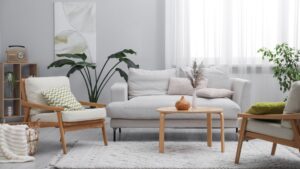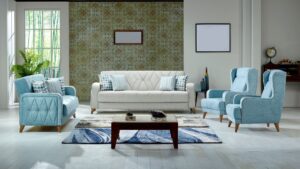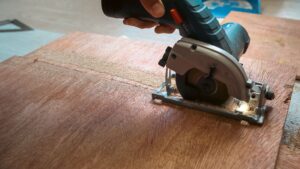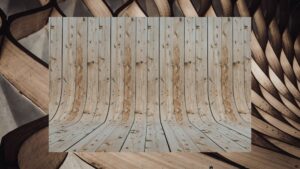If you have ever gone furniture shopping or Started home renovation you’ll probably come across the terms plywood and veneer. At first glance this might seem really similar after all both are used in furniture cabinets doors and interior design. But they are actually quite different in how they are made and how they are used. So if you’ve ever found yourself wondering is Veneer the same as plywood? Well then, this blog is just for you
What is plywood
Plywood is a man-made wood panel. It’s basically created by gluing together several thin layers of natural wood. These layers are stacked on top of each other. With the grain direction of each layer alternating this makes the sheet strong and stable. The outer layers can be made from different types of wood like teak pine Birch and everything else depending on the quality and use. common uses include making furniture like beds, sofas and tables, doors and wardrobes and wall panels and ceilings.
What is Veneer?
Now let’s talk about Veneer. Veneer is a very thin slice of real board usually less than 1mm thick. Is basically used to cover the surface of another material like plywood or particle board. You can think of it like a skin of real wood placed over less expensive ways. So whenever you see a table that looks like it’s made from teak wood but it’s actually much cheaper it’s probably plywood with teak Veneer on top.
The major difference between plywood and Veneer
Plywood is made of multiple layers of wood glued together while Veneer is made from a thin slice of real hardwood based on top of another material.
Plywood is used as a main building material that you can make full furniture or panels with. Veneer is used like a decorative top layer to give a plywood or MDF surface a premium look. Plywood is completely strong and holds screws and nails with. It forms the backbone of many items. Veneer is not strong on its own; it’s only for the surface. Power comes from the base material underneath.
Furthermore plywood can look plain unless finished with laminate or Veneer. It gives a rich natural wood finish great for creating high end interiors. Plywood is more expensive than MDF but cheaper than solid wood. Veneer is more expensive than laminate but cheaper than solid wood . It adds to the cost of the item it covers.
Plywood requires fairly low maintenance depending on the finish. But Veneer on the other hand needs a bit more care. It can easily get scratched or peeled if handled roughly.
Plywood with Veneer
Often plywood and Veneer are commonly used together. Plywood forms the base and Veneer is added on the top to make the furniture look like it’s made from a rich expansive world. This is very common in office desks, decorative panels, designer wardrobes, hotel interiors and modular kitchen cabinets. It’s a smart trick used by carpenters and interior designers to balance costs, durability and appearance.
How to choose what’s right for you?
Do you want something strong that lasts then choose plywood as the core? You want rich wooden beauty on a budget? Add Veneer on top of plywood. Do you need a low maintenance surface for kids’ kitchens? Consider laminate instead of Veneer. You must always check the grade of plywood, the type of Veneer.
So above all you need to know that plywood and Veneer might look similar at first but they play a very different role in furniture and interiors. Plywood gives you strength and structure while Veneer gives you beauty and style. When used together they offer a perfect balance of quality cost and design. Now that you know how they differ you can make a smarter choice for your next project.







